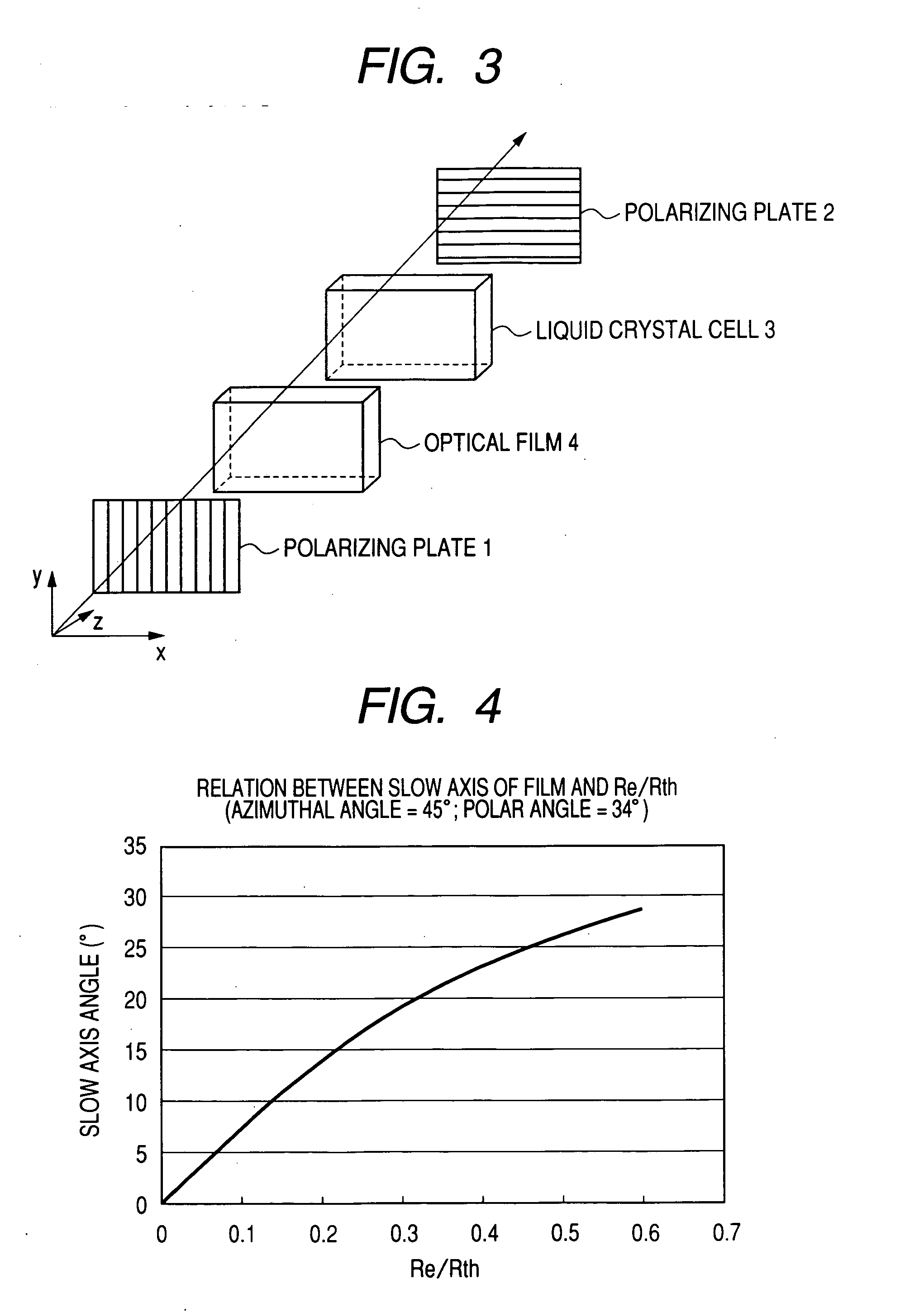Optical film and optical compensatory film, polarizing plate and liquid crystal display using same
a technology of optical compensatory film and liquid crystal display, applied in the direction of polarizing elements, instruments, transportation and packaging, etc., can solve the problems of narrow viewing angle and inability to meet the demands of the above-mentioned art, and achieve the effect of suppressing color shift and high contras
- Summary
- Abstract
- Description
- Claims
- Application Information
AI Technical Summary
Benefits of technology
Problems solved by technology
Method used
Image
Examples
example 1
[0508] An aqueous solution of sodium hydroxide and ion-exchanged water were charged in a reactor equipped with a stirrer, a thermometer and a reflux condenser, and monomers (E) and (F) respectively having the above-described structures were dissolved therein with a molar ratio of 47:53, followed by adding thereto a small amount of hydrosulfite. Subsequently, methylene chloride was added thereto, and phosgene was blown thereinto at 20° C. in about 60 minutes. Further, p-tert-butylphenol was added thereto to emulsify, followed by adding thereto triethylamine and stirring the mixture at 30° C. for about 3 hours to complete the reaction. After completion of the reaction, the organic phase was separated, and inethylene chloride was distilled off to obtain a polycarbonate copolymer. The composition ratio of the resulting copolymer was almost the same as the ratio with charged monomers.
[0509] 3 Parts of the following discotic compound per 100 parts by weight of the copolymer was dissolved...
example 2
[0512] The same dope solution as used in Example 1 was used. This dope solution was continuously cast through a die onto a stainless steel-made band and was then peeled from the band at a residual solvent amount of 20% by weight, followed by free uniaxial stretching with a stretch ratio of 1.4 times the original in the longitudinal direction in a 200° C. drying zone between roll sets different from each other in rotation velocity. Further, the stretched film was passed through a drying zone where the residual solvent amount was reduced to 1% by weight or less to obtain an optical film having properties shown in Table 1.
example 3
[0514] A dope solution containing 18% by weight of solid components was prepared by dissolving in methylene chloride 3 parts by weight of the following rod-shaped compound in place of the discotic compound used in Example 1 per 100 parts by weight of the polycarbonate. This dope solution was continuously cast through a die onto a stainless steel-made band and was then peeled from the band at a residual solvent amount of 20% by weight, followed by free uniaxial stretching with a stretch ratio of 1.6 times the original in the longitudinal direction in a 200° C. drying zone between roll sets different from each other in rotation velocity. Further, the stretched film was passed through a drying zone where the residual solvent amount was reduced to 1% by weight or less to obtain an optical film having properties shown in Table 1.
PUM
| Property | Measurement | Unit |
|---|---|---|
| mol % | aaaaa | aaaaa |
| mol % | aaaaa | aaaaa |
| wavelength region | aaaaa | aaaaa |
Abstract
Description
Claims
Application Information
 Login to View More
Login to View More - R&D
- Intellectual Property
- Life Sciences
- Materials
- Tech Scout
- Unparalleled Data Quality
- Higher Quality Content
- 60% Fewer Hallucinations
Browse by: Latest US Patents, China's latest patents, Technical Efficacy Thesaurus, Application Domain, Technology Topic, Popular Technical Reports.
© 2025 PatSnap. All rights reserved.Legal|Privacy policy|Modern Slavery Act Transparency Statement|Sitemap|About US| Contact US: help@patsnap.com



